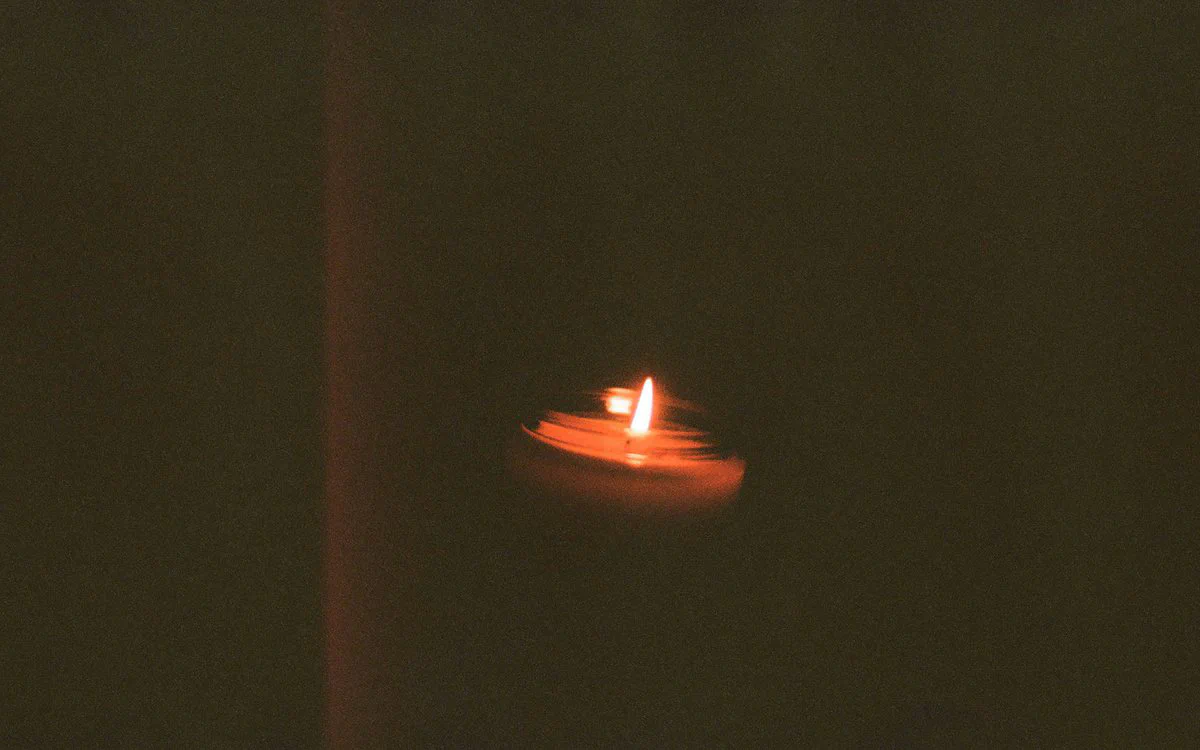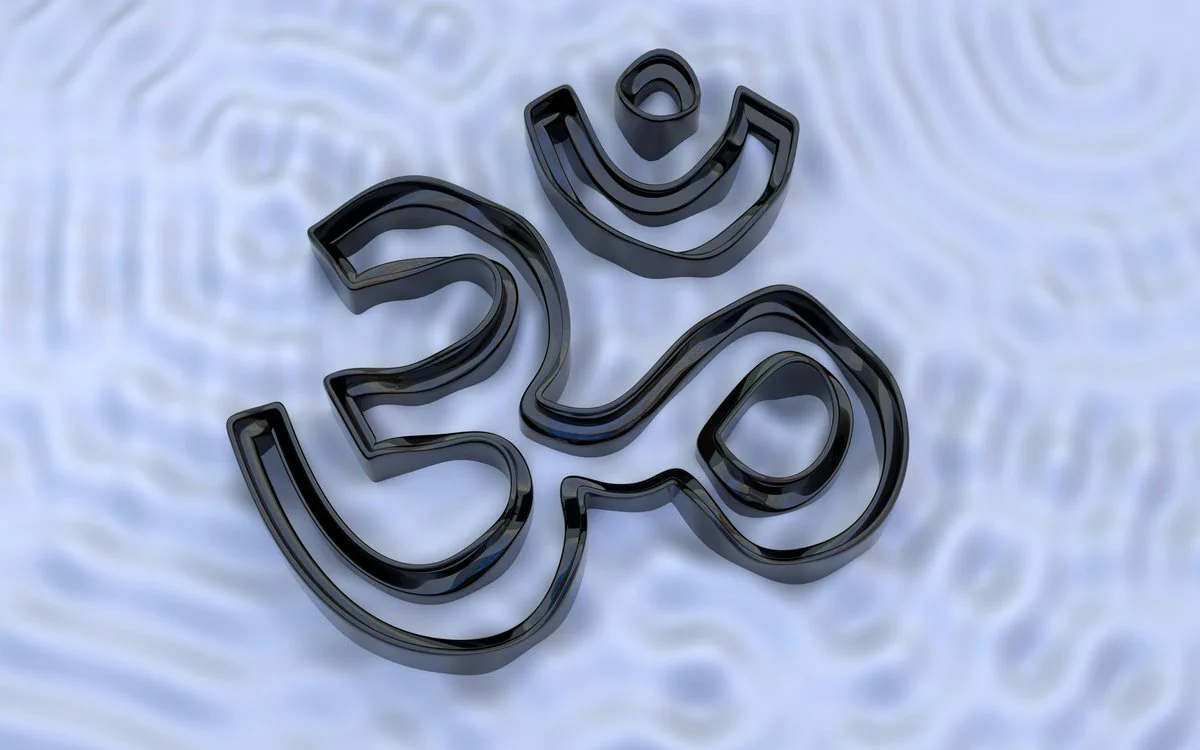Exploring After-Image Meditation
Info
🧠 After-image meditation is not a side-effect of candle gazing—it is the inner portal of Trataka (त्राटक), where external vision turns inward and stillness is anchored in the subtle field of the mind.
🌟 Introduction: Inner Gateway of Trataka
As one deepens in the yogic practice of Trataka, the external flame (Bahya Jyoti - बाह्य ज्योति) begins to imprint itself within the inner field of consciousness. This after-image (Pratibimba - प्रतिबिम्ब) is not merely a retinal artifact—it becomes the anchor of Antar Trataka (अन्तर त्राटक), or internal gazing.
Unlike beginner sessions that focus only on stillness of the eyes, after-image meditation develops stability of mind, breath, and inner perception. It is here that Ajna Chakra (आज्ञा चक्र) becomes involved, as the internal flame is projected and held between the eyebrows, drawing the practitioner into a state of refined concentration (Dharana - धारणा).

👁️ What Is After-Image in Yogic Terms?
In yogic psychology, Pratibimba (प्रतिबिम्ब) refers to a mental reflection or inner impression. When one gazes steadily at a candle flame, light impressions are absorbed by the optic nerves and carried deep into the manomaya kosha (mind sheath). Upon closing the eyes, this after-image lingers as a mental flame—an imprint upon the Chidakasha (चिताकाश) or inner space of awareness.
This differs from a mere physiological retinal afterimage. In yogic tradition, it is a sacred internal object (Antar Drisya - अन्तर दृश्य) used to cultivate Dharana.
Scientific parallels include:
- Retinal persistence and visual echo (Raghavendra et al., 2021)
- Activation of occipital and parietal cortex during closed-eye visualization (fMRI studies)
When stabilized, this after-image acts like a mirror (Pratibimba) reflecting the inner flame of the mind, enabling progress toward Pratyahara (withdrawal of senses) and deeper meditative states.
🧘♂️ Techniques to Cultivate After-Image Awareness
Cultivating a clear, stable after-image is both a skill and a subtle art.
Here are refined techniques drawn from classical commentaries and confirmed by contemporary meditative research:
🔥 Steady Gaze Duration: Gaze at the flame for 3–5 minutes without blinking excessively. Focus on the tip of the flame, not the base or the wick. Let the eyes remain soft and still, practicing Mridu Drishti (मृदु दृष्टि).
🕉 Smooth Eye Closure: When ready, gently close your eyes without rushing. Avoid abrupt eyelid motion. Imagine the after-image settling gently into the space between the eyebrows (Ajna region).
🌫️ Fix the After-Image: With eyes closed, fix your mental focus on the glowing imprint. It may flicker, shrink, or move—simply observe without chasing it. Return gently to center each time it drifts.
🌬️ Breath Synchronization: Breathe slowly and naturally. On inhalation, imagine the glow intensifying. On exhalation, imagine it stabilizing. This engages both Pranic flow and visual stability.
⏳ Timing & Cycles: Practice in short open/closed-eye cycles. For example: 3 minutes gazing → 1 minute closed eyes → repeat 2–3 rounds. This trains both the optic response and inner visual endurance.
🪷 Mental Anchoring: Use a simple mantra silently (e.g., So-Ham) while holding the after-image. This prevents mental drift and deepens inner absorption.
These techniques transform the fleeting flame impression into a living symbol of inner light—used by yogis to reach deeper meditative states like Ekagrata (single-pointedness) and eventually Samyama.
🔄 Antar Trataka Sequence (Structured Routine)
This step-by-step internal Trataka cycle is designed for intermediate to advanced practitioners who are comfortable with open-eye gazing and wish to deepen their inner visualization (Antar Drishti - अन्तर दृष्टि).
🧭 Recommended Practice Cycle
🔥 Gaze at the Flame — 3 to 5 minutes, focusing softly at the flame’s tip.
👁️ Close Eyes Gently — Allow the after-image to form in the Ajna region.
🌫️ Hold the Inner Flame — Observe and stabilize the flame impression.
🌬️ Synchronize with Breath — Visualize the flame responding to your breath.
⏳ Open Eyes and Repeat — Repeat the cycle 2–4 times, progressively lengthening the inner phase.
📌 Tip: Always end the session with the final after-image phase and allow it to fade naturally.
🕰 Sample Session Format (15–25 mins)
🔄 2–4 cycles: External → Internal → External
🧘 Final 3–5 minutes: Sit in silence after the last inner phase
🎧 Optional: Use ambient drone or mantra if helpful
🧠 Psychological and Energetic Effects of After-Image Meditation
Scientific and yogic frameworks converge in recognizing the transformative effects of internal visualization on attention, emotion, and subtle energy systems.
🧠 Cognitive Effects (Western Psychology)
- Improved visual working memory and mental imagery control
- Enhanced attention span, particularly for visual-spatial tasks
- Activation of default mode network (DMN) during post-gazing introspection
⚡ Energetic & Yogic Benefits
- Strengthens Ajna Chakra (आज्ञा चक्र) through internal flame visualization
- Leads to withdrawal of senses (Pratyahara - प्रत्याहार) and entry into Dharana
- Balances Prana Vayu (प्राण वायु) and Udana Vayu (उदान वायु)—vital for mental clarity
Note
🧘♂️ Advanced Antar Trataka often results in a stable, glowing after-image that persists like an internal lamp. Yogis refer to this as the emergence of the “inner Jyoti (ज्योति)”, a sign of deepening inner perception.
⚠️ Common Challenges to Overcome Them
🌪️ Fading or Unstable After-Images
- Cause: Over-focus, poor gaze stability, or dryness
- Solution: Shorter open-eye cycles; blink naturally; practice during consistent light conditions
😵 Mental Wandering During Inner Focus
- Cause: Lack of anchoring once eyes close
- Solution: Use breath-mantra anchoring (So-Ham, Om); reduce cycle duration; journal post-session reflections
😴 Dullness or Sleepiness
- Cause: Practicing after meals or late at night
- Solution: Practice in the early morning or late afternoon; sit upright and maintain alert posture
🔄 Over-Attachment to the Image
- Cause: Trying too hard to “hold” the image
- Solution: Let the image arise and dissolve naturally—Antar Trataka is a passive witnessing, not control.
Tip
📿 Always prioritize comfort, softness of gaze, and natural fading of the image. The goal is not visual precision, but meditative stability.
🌀 Deepening Practice: From After-Image to Inner Flame
As the after-image stabilizes and persists beyond the physical stimulus, it begins to evolve into a luminous inner symbol—referred to in yogic texts as the Antar Jyoti (अन्तर ज्योति) or inner flame. This shift marks a transition from Antar Trataka (अन्तर त्राटक) into Jyoti Dhyana (ज्योति ध्यान)—light-based inner absorption.
In classical language, this is where Pratibimba (reflection) becomes Prakash (illumined awareness).
Key signs of deepening practice:
- The after-image appears automatically even without a flame
- It becomes stable, luminous, and may shift in color or center
- The image draws your awareness inward effortlessly
- A sense of stillness pervades the inner space (Chidakasha - चिताकाश)
Advanced yogis hold this inner flame at the Ajna Chakra and merge breath, mantra, and visualization. This leads to Dharana → Dhyana → Samyama, the trifecta described by Patanjali.
Note
🕯️ “When the inner flame burns without flicker, the outer flame is no longer needed.” – Yogic proverb
✅ Summary: Inner Visualization Keys
After-image meditation is not a side effect—it is a gateway into Antaranga Sadhana (inner yogic discipline).
🧩 Recap:
👁️ Stabilize your external gaze to seed a clean after-image
🧘 Close eyes with softness; anchor mentally in Ajna region
🌫️ Let the image arise and dissolve naturally
🌀 Over time, this becomes your meditative anchor
✨ Transition from image to inner light (Jyoti)
This practice merges Trataka with visual meditation, creating a bridge to advanced yogic absorption. What begins as a flicker of light becomes a pillar of inner stillness.
🔗 What’s Next? Chakra-Based or Symbolic Trataka
Having stabilized the inner flame, advanced practitioners may move into symbolic visualization and chakra-focused gazing.
Next options include:
🎯 Ajna Chakra Trataka – Gazing internally at the third-eye center, sometimes accompanied by indigo or violet color visualization.
🔻 Yantra or Mandala Trataka – Use of geometric or tantric symbols (e.g., Sri Yantra, bindu point) for focused visualization.
🔆 Jyoti Dhyana with Mantra – Holding the inner flame with silent repetition of bija mantras (e.g., OM, Shreem, Hreem).
You may explore these paths via our upcoming guides or under the guidance of a qualified teacher.

Info
🧭 Let your practice evolve with patience. Inner light is not imagined—it is revealed.